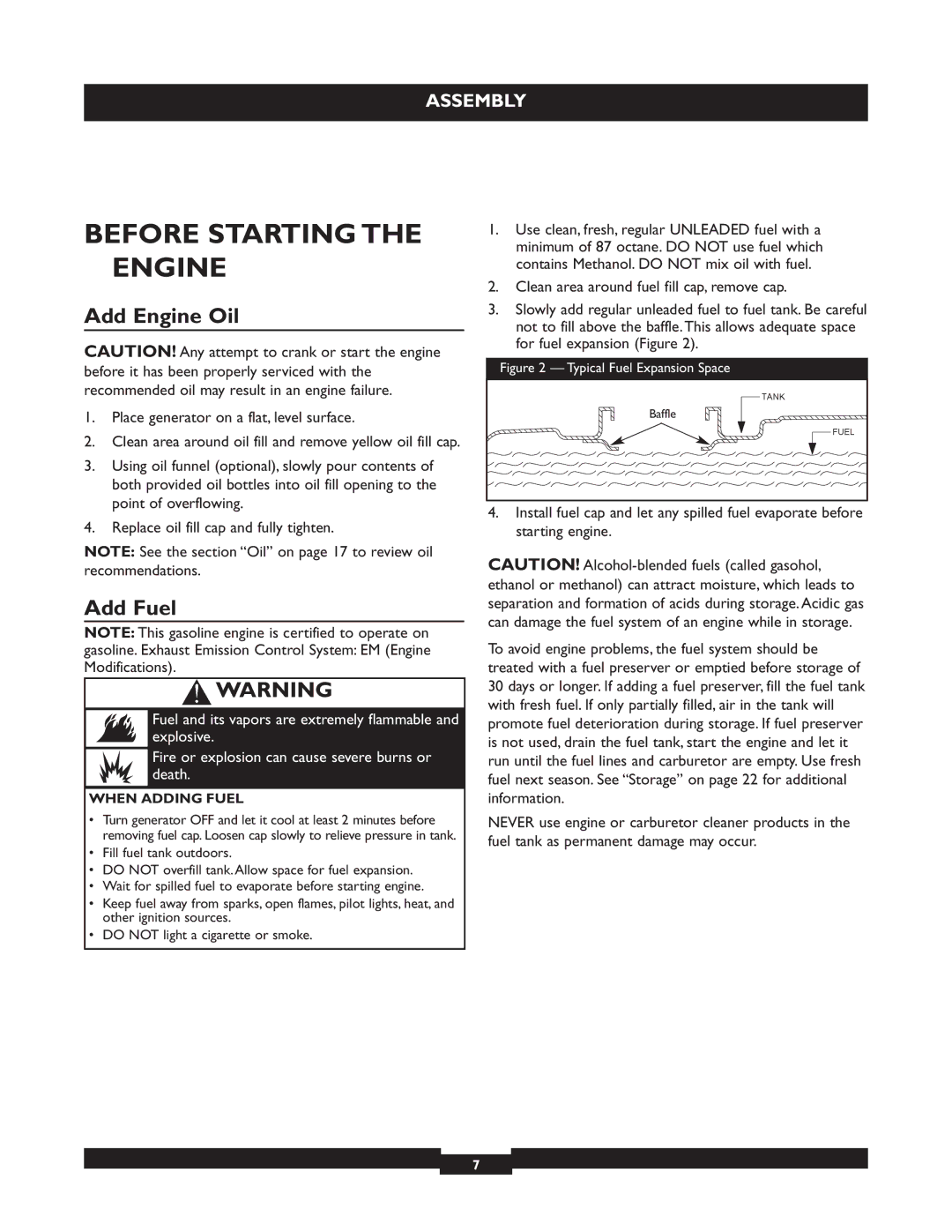30244 specifications
The Briggs & Stratton 30244 is a prominent portable generator designed to meet the power needs of homeowners and professionals alike. This generator stands out for its reliability, efficiency, and user-friendly features, making it a popular choice for a variety of applications, from powering essential appliances during outages to providing electricity at job sites or outdoor events.One of the main features of the Briggs & Stratton 30244 is its impressive power output. With a maximum wattage of 7000 watts and a rated wattage of 5500 watts, this generator is capable of running multiple appliances simultaneously. Whether you need to power your refrigerator, lights, or other vital equipment during an outage, the 30244 has the capacity to handle it all. This makes it an ideal backup option for homeowners looking to maintain comfort and safety during unexpected blackouts.
The 30244 also boasts advanced technologies designed to enhance performance and fuel efficiency. It is equipped with a powerful and efficient 306cc engine, offering a balance of power and fuel consumption. This generator features a durable, low-oil shutdown system that protects the engine from damage by automatically turning it off when oil levels are low. Additionally, the generator utilizes a large-capacity fuel tank, which allows for extended run times without frequent refueling, making it convenient for prolonged power needs.
Portability is another key characteristic of the Briggs & Stratton 30244. The generator is designed with a compact and sturdy frame, complemented by a built-in handle and durable wheels, enabling easy transportation to wherever the power is needed. Whether you're moving it around the yard or loading it into a vehicle for a camping trip, its lightweight construction and thoughtful design make portability hassle-free.
Safety features are paramount in the Briggs & Stratton 30244, too. It is equipped with circuit breakers to protect against overloads, ensuring safe operation. Additionally, the generator includes a quiet design that minimizes noise, making it suitable for neighborhood use without causing disturbances.
In conclusion, the Briggs & Stratton 30244 is a versatile, powerful, and user-friendly portable generator. Its robust power output, efficient engine technology, portability, and safety features make it an excellent choice for individuals and families seeking reliable power solutions in various situations. Whether for home use or outdoor activities, this generator is designed to deliver performance and peace of mind.

